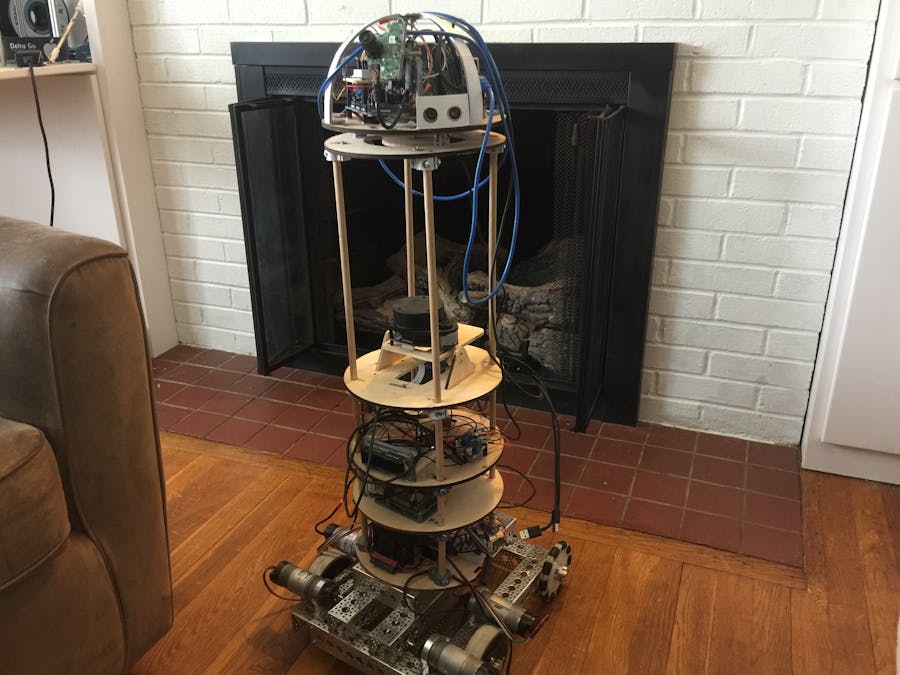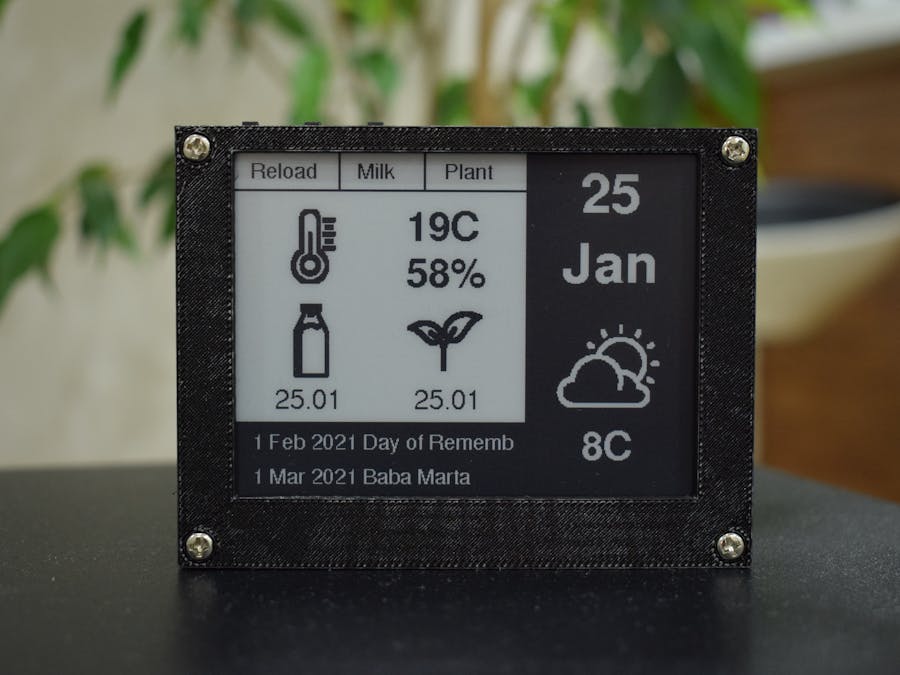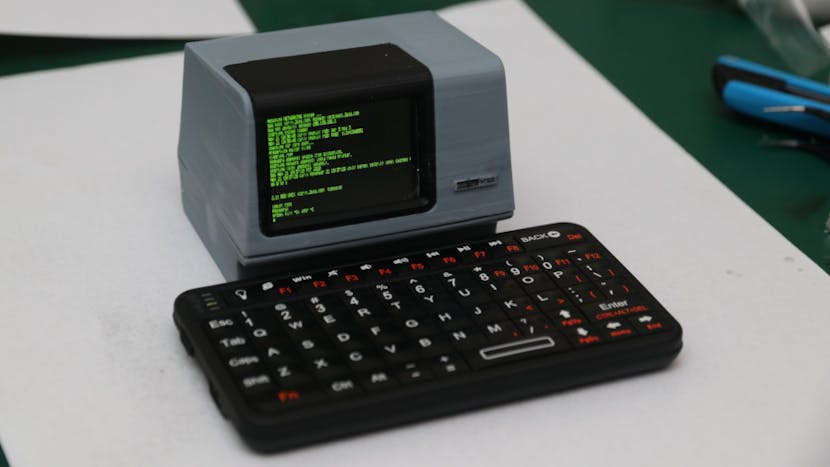The game is displayed using a laser which is directed using mirrors. You can find kits on eBay (search for laser galvo).
ESP8266
Autonomous Home Robot to Help Around the House!
A low-cost home robot that can do tasks around the house.
I have been developing an autonomous home-assistant robot. This robot was entirely designed, created, and built from scratch with no use of a kit or directions. In the process of creating this, I taught myself how to use ROS, Python, C, HTML, CSS, OpenCV, and other complex systems/languages.
The robot is able to travel around the house independently using Simultaneous Localization and Mapping (SLAM) with Robot Operating System (ROS) for navigation. It knows where to go based on pre-set waypoints. This machine is a prototype of a low-cost robotic assistant for the average person to use in their home. It combines facial recognition, navigation, and a web-control page, as well as other easy-control options such as gesture-control, Wii remote, and even hand-guided. The robot uses many Proportional Integral Derivative (PID) control systems which allows the robot to self-balance, making it more user-friendly, lighter weight, and maneuverable.

M5Timer Camera X ESP32 Camera (Best ESP32 Camera)
Timer Camera X is a camera module based on ESP32, integrated with ESP32 chip and 8M-PSRAM. The camera (ov3660) with 3 million pixels , DFOV 66.5 ° and shoot 2048×1536 resolution photo, built-in 140mAh battery and LED status indicator, featuring ultra-low power consumption design. There is a reset button under the LED. Through RTC (BM8563), timing sleep and wake-up can be realized
M5StickC Plus (ESP32) Game Console (5 Games)
In the past, I created couple games for the TTGO T DISPLAY board. M5StickC Plus has same size display, it has built in buzzer, battery, you can carry it in a pocket and it si also powered by ESP32. If you add this joystick module you have a little pocket game console. I edited Togo games so now I can run them on M5Stick C Plus board. Feel free to use and modify my code.
EPaper Dashboard
I needed a device that can store the date of a specific event, which I can check later. To be more precise, I needed a device that can store the last date I fed the flowers. The device must be portable and powered by a battery. And because a whole display only for one date is a bit of a waste, I decided to add more features like weather and calendar widgets.
The obvious choice for the display was E-Paper, and for the IC initially, I picked esp8266, but after comparing it with esp32, I had to switch it.
The esp32 has a feature that is very important for this project – esp_sleep_enable_ext1_wakeup. This allows IC to wake with almost any from the GPIO(here a good tutorial https://randomnerdtutorials.com/esp32-external-wake-up-deep-sleep/).

GBCCAT – Gameboy Color Emulator for ESP32
GBCCAT – Gameboy Color Emulator by Nathalis based on GNUBOY, still in development, used hardware is ESP32 WROVER chip, ST7789 1.3″ LCD 240*240px, loading games from microSD card, emulator has been controlled by PS2 (USB) keyboard, source and schematic is avaliable on Github: https://github.com/nathalis/GBCCAT
ESP32 Dual Core on Arduino IDE including Data Passing and Task Synchronization
The new ESP32 has three cores. Two of them are very fast; the third is ultra-low power.
The Arduino IDE typically only uses one of the fast cores. Today:
– We will take full advantage of the second core of the ESP32
– We will test if it really increases the capacity of our microprocessor
– We will also compare its dual-core speed with the speed of an Arduino UNO
– We will try to synchronize tasks, even if they run on two different cores
– We will also try to use the same data on both cores
– These two mechanisms are mandatory if you want to use the two cores in a productive fashion
– And we will not leave the Arduino IDE. Promised
Tiny 3D-Printed DEC VT-102 Hides a Fully-Functional, ESP32-Powered PDP-11 Minicomputer
A tiny screen and a 3D-printed chassis brings some of Digital’s fondest-remembered hardware up to date — and down in scale.
Jeroen “Sprite_tm” Domburg has been working on a build with a difference: It’s an ultra-compact replica of a Digital DEC VT-102 terminal, emulating a PDP-11 running 2.11BSD — all on the top of an Espressif ESP32 microcontroller.
“The thing that attracted me to the PDP11 is that the PDP line in general always has been a family of ‘hackers’ machines,'” Sprite_tm explains. “Its members were cheap enough to allow people to do fun stuff on, and for instance the first computer game, SpaceWar!, was written on a PDP1. It wouldn’t be the last game written on a PDP machine, though: Apart from the aforementioned arcade games, all the way in Russia on a cloned PDP-11, Russian software engineer Alexey Pajitnov wrote a certain title called ‘Tetris,’ which later was spread all over the world.”

Additional ESP32 Serial Channels in Arduino IDE (Quickie)
In video #147 I said, that the Arduino IDE can only use one Serial connection of the three available on the ESP32. A viewer told me, that this is wrong and pointed me to the right direction. And then, I even found a third, “secret” Serial connection.
SS4H-SD Smart Doorbell – DIY project based on ESP32
You surely know this feeling when the doorbell rings while you are doing something interesting: watching a movie, playing a video game, or spending a romantic evening with your loved one. And when it turns out that this is an uninvited/unwanted guest, you get even more pissed off.
Of course, you can ignore it and not open the door, but there will always be this hint of uncertainty – “maybe it was important”.
The solution to this problem is the “smart doorbell”. Thanks to it, you’ll know if it is worth getting up from the couch and opening the door or not.

